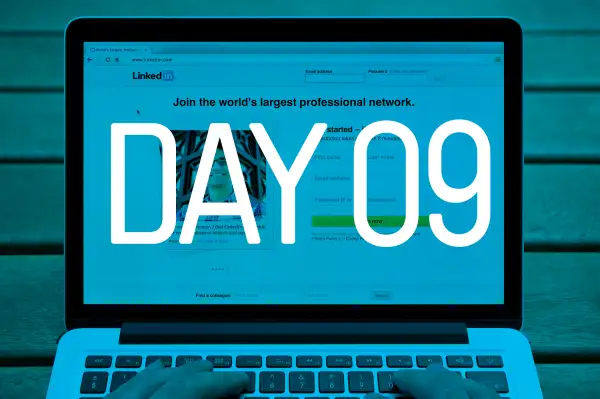Check Your LinkedIn Profile for These 7 Mistakes

This is the Day 9 in the #Money30, a month-long bootcamp for personal finance novices. You can read more about the challenge here, and follow along with us on Twitter, Instagram, or email us at feedback@moneymail.com.
TIME BUDGET: 15 MINUTES
While referrals and internships still matter when it comes to finding a new job, social media’s impact on your career is far from negligible.
According to a 2015 Jobvite survey, 87% of recruiters say they use LinkedIn to find job candidates. That’s reason enough to make sure your LinkedIn presence is in tip-top shape—or, if you're not on LinkedIn, to get yourself established as soon as possible.
It might seem easy enough to set up a profile (the site walks you through the sections you need to fill out), but there are some all-too-common mistakes that could make or break your job prospects.
Donna Serdula, founder of LinkedIn-Makeover.com, says that too many people don’t consider how their LinkedIn profile looks to a recruiter, and that oversight may be costing them a job.
“You don’t want to just fill out fields," she says. "You need to strategically say, ‘Why am I on LinkedIn and what is my goal?’”
These are the biggest mistakes Serdula sees on LinkedIn, so take a look at your own profile and see whether there's room for improvement.
1. Not using keywords
Before you can worry about a recruiter dissecting your profile page, you have to consider whether the recruiter can find you in the first place.
Serdula says that too many LinkedIn users fail to use keywords in their profile “headline” (the phrase below your name that indicates what your job title is), so their profile doesn’t appear in a LinkedIn search.
What kind of keywords should you be using? Think about what a recruiter would type into a search function on LinkedIn. Serdula says you don’t necessarily have to make your headline your current position, but it should capture your role in broader terms. She suggests using an online word cloud generator to find keywords associated with your industry to help you think of an eye-catching, search-friendly headline. And be specific: So instead of a "social platform ninja," you're a "social media strategist who helps brands connect with their customers."
2. Using an inappropriate photo
LinkedIn is primarily a professional network, and your profile picture should reflect that. While Serdula suggests having professional headshots taken, not everyone can afford a studio session. Instead, have a friend take a well-lit photo of you in professional clothing against a neutrally colored wall.
3. Not giving your contact information
While people assume going through LinkedIn is the best way for people to find them, only first-degree connections can message you on the site. That means only recruiters to whom you’re already connected can reach out about a job posting.
Instead, Serdula recommends including your contact information (a professional email address or a phone number) near the top of your profile or in your summary. That way, recruiters will be able to contact you even if you’re not already connected.
And if you’re not comfortable leaving your cell phone or house phone number on the Internet, Serdula suggests setting up a Google Voice number instead.
4. Regurgitating your resume
“Don’t give away the farm,” Serdula says of LinkedIn profiles that leave no reason for a recruiter to ask a possible job candidate more about themselves.
The key here is to make sure that your profile indicates where you are now professionally, and expresses where you’d like to be. It’s okay to include your past experiences, but they shouldn’t be the dominant part of your profile.
5. Linking to nonprofessional profiles
LinkedIn is a professional social network, and while that might seem like an oxymoron, Serdula stresses that it’s important to maintain a professional persona throughout. That means not linking to a Facebook profile that has pictures documenting your weekend parties or a Twitter that regularly features Kardashian musings.
6. Writing like a robot
Serdula says to let your personality—tempered for the professional realm, of course—shine through in your profile and avoid writing summaries that make your page feel impersonal. Another big “don’t”: writing about yourself in the third person.
7. Hiding employment gaps or your age
Age discrimination is a real thing, but that doesn’t mean you should give in to it. Serdula says not to hide clues about your age, whether through a profile picture or through the years you indicate for education or employment. Some recruiters want more experienced candidates, but may not find them if a profile is disguised otherwise.
Additionally, it’s important to be honest about why you may have gaps in your resume. "Don’t sweat it," Serdula says about acknowledging resume gaps. "Make mention of why you were out of work.”
—Alexandra Mondalek
Have a question, comment, or suggestion? Email us at feedback@moneymail.com.